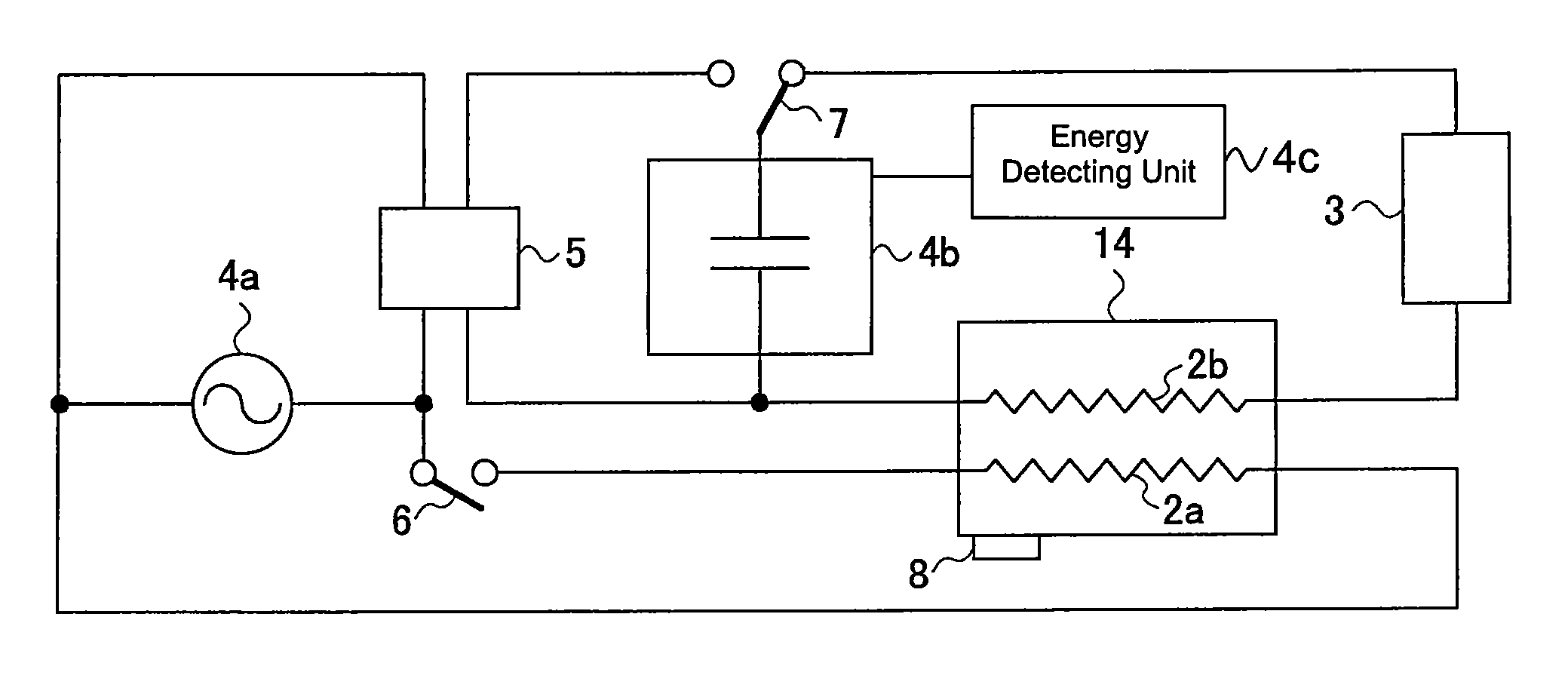Heating apparatus, fixing apparatus, and image forming apparatus which charges an auxiliary power unit to less than a maximum value in a standby status
a technology of fixing apparatus and heating apparatus, which is applied in the direction of electrographic process apparatus, instruments, optics, etc., can solve the problems of excessive electric power supply, abnormal temperature rise of heating units, and decreased usability of such an image forming apparatus
- Summary
- Abstract
- Description
- Claims
- Application Information
AI Technical Summary
Benefits of technology
Problems solved by technology
Method used
Image
Examples
first embodiment
[0051]FIG. 6 shows an image forming apparatus having a fixing apparatus according to the present invention. In FIG. 6, numeral 41 designates a drum photoconductor as an example of an image carrier made of a rotator. On the periphery of the photoconductor 41, there are disposed an electrifying unit 42 made of an electrifying roller, a mirror 43 constituting a portion of an exposure unit, a developing unit 44 provided with a developing roller 44a, a transferring unit 48 for transferring a developed image to a piece of paper P used as a recording material, a cleaning unit 46 provided with a blade 46a in slidable contact with a circumferential surface of the photoconductor 41, and the like in order of a rotation direction indicated by an arrow in the figure. The photoconductor 41 is scanned and exposed between the electrifying unit 42 and the developing roller 44a by the exposure unit using an exposure light Lb via the mirror 43. A position of the photoconductor 41 where the exposure li...
second embodiment
[0074]It is difficult to raise the temperature of the heating unit 14 in a short time due to a lack of electric energy when saving the maximum electric energy charged in the auxiliary power unit 4b in the standby status so as not to cause the abnormal rising of the temperature of the heating unit upon repeating the feeding of a small number of pieces of paper and then trying to return from the off mode to the temperature for enabling the heating unit 14 to perform fixing without changing the maximum electric energy. In view of this, when the electric power supply to the heat generator 2 is stopped (the off-mode), the auxiliary power unit 4b is charged to the maximum value V1 of electric energy that can be charged, so that it is possible to reduce return time when returning to the temperature for enabling the heating unit 14 to perform fixing.
[0075]FIG. 5 is a waveform diagram showing the temperature of the heating unit 14 and the electric energy in the auxiliary power unit 4b in a ...
third embodiment
[0077]In the third embodiment, the temperature of the heat generator 2 is controlled to be a set temperature or the set temperature ±10° C. by the control of main power source switch 6 of the first control unit, namely, 180° C., for example. In the warming-up status or the return status for returning from the off mode to the temperature for enabling the heating unit 14 to perform fixing, the temperature of the heat generator 2 is raised to 200° C., for example. When the temperature is lowered in the paper-feed status, the temperature is maintained to be a lower limit temperature for enabling fixing, namely, not less than 160° C., for example.
[0078]According to the third embodiment, when electric energy V5 not less than the electric energy V4 is charged in the auxiliary power unit 4b, the electric energy V4 being the first maximum value of electric energy charged in the auxiliary power unit 4b in the standby status, the charging of the auxiliary power unit 4b is not performed until t...
PUM
 Login to View More
Login to View More Abstract
Description
Claims
Application Information
 Login to View More
Login to View More - R&D
- Intellectual Property
- Life Sciences
- Materials
- Tech Scout
- Unparalleled Data Quality
- Higher Quality Content
- 60% Fewer Hallucinations
Browse by: Latest US Patents, China's latest patents, Technical Efficacy Thesaurus, Application Domain, Technology Topic, Popular Technical Reports.
© 2025 PatSnap. All rights reserved.Legal|Privacy policy|Modern Slavery Act Transparency Statement|Sitemap|About US| Contact US: help@patsnap.com



